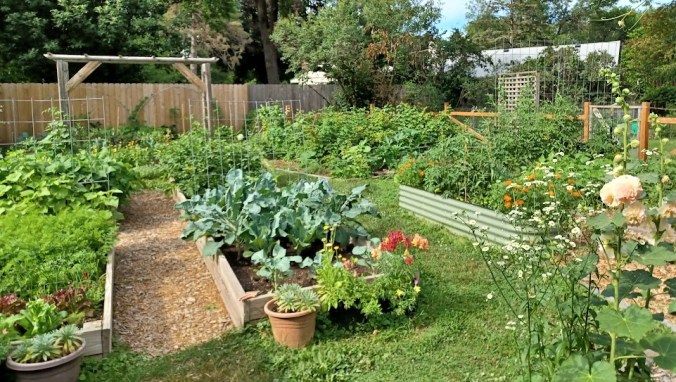The dream of cultivating your own food is not limited to those with sprawling gardens. For urban homesteaders or anyone living in tight quarters, knowing how to grow food in small spaces is an invaluable skill. With a bit of creativity and strategic planning, even the smallest balcony or window sill can become a thriving garden. In this article, we will explore techniques and tips that will help you make the most out of limited space.

Understanding the Basics of Small Space Gardening
Importance of Planning
Before you dive into planting, it’s crucial to plan your space wisely. Consider what vegetables or herbs you want to grow, and research their specific space and sunlight requirements. This will help you avoid overcrowding and ensure that each plant has the room it needs to thrive.
Choosing the Right Plants
Selecting plants that naturally grow well in confined spaces is key. Opt for dwarf varieties or plants that have been bred for compact growth. Leafy greens, herbs, and root vegetables like radishes are excellent choices for small spaces.
Maximizing Your Growing Potential
Vertical Gardening Techniques
One effective way to maximize space is by growing vertically. Use trellises, wall-mounted planters, or hanging baskets to take advantage of vertical space. This not only increases your growing potential but also adds a unique aesthetic to your garden.
Container Gardening Tips
Containers are a small space gardener’s best friend. Choose pots that are the right size for your plants and make sure they have adequate drainage. Get creative with your container choices use old buckets, crates, or even recycled cans.
Optimizing Light and Water
Utilizing Natural Light
Light is a critical factor in growing food. Place your plants where they will receive the most sunlight throughout the day. If natural light is limited, consider using grow lights to supplement.
Efficient Watering Techniques
In small spaces, efficient watering is crucial. Overwatering can lead to root rot, while underwatering can stunt growth. Use self-watering containers or install a drip irrigation system to maintain consistent moisture levels.
Maintaining Soil Health
Choosing the Right Soil
The success of your garden heavily depends on the quality of the soil. Use a high-quality potting mix that retains moisture yet drains well. Consider adding organic matter like compost to enrich the soil.
Mulching for Moisture Retention
Mulching helps retain moisture and suppress weeds. It’s especially beneficial in small spaces where soil can dry out quickly. Check out this mulching guide from 15 Acre Homestead for more tips.
Dealing with Pests and Diseases
Integrated Pest Management
Managing pests in small gardens can be challenging, but integrated pest management (IPM) techniques can help. IPM focuses on using natural predators and organic solutions to control pests. Learn more about integrated pest management strategies on 15 Acre Homestead.
Common Diseases and Solutions
Monitor your plants regularly for signs of disease. Early detection is key to preventing the spread. Use organic fungicides and implement crop rotation to keep diseases at bay.
Seasonal Considerations
Adapting to Climate
Understanding your local climate is crucial to successful small space gardening. Select plants that are suited to your area’s growing season and be prepared to protect them from extreme weather.
Extending the Growing Season
To extend your growing season, consider using row covers or small hoop houses. These can protect your plants from frost and help maintain warmer temperatures.
Practical Tips for Urban Homesteaders
Recycling and Upcycling
Urban homesteaders often have a knack for using recycled materials. Consider upcycling old furniture into planters or using kitchen scraps to create compost.
Reducing Waste
Incorporate zero-waste practices into your gardening routine. For tips on reducing waste and saving money, visit this guide from 15 Acre Homestead.
Resources and Inspiration
Community Gardens
Joining a community garden can provide valuable support and resources. It’s a great way to learn from others and share in the joys of growing food.
Online Resources
There are plenty of online communities and resources for urban homesteaders. For inspiration, check out this urban homesteading guide.
Conclusion
Growing food in small spaces is not only possible but can also be incredibly rewarding. By following these tips and utilizing available resources, you can transform even the smallest area into a productive garden. Embrace the challenge and enjoy the satisfaction of cultivating your own fresh produce.

FAQ Section
What are the easiest vegetables to grow in small spaces?
Leafy greens, herbs, and root vegetables like radishes are some of the easiest to grow in limited space.
How can I improve soil quality in my containers?
Use a high-quality potting mix and add organic matter like compost to enrich the soil.
Is it possible to grow fruit in small spaces?
Yes, dwarf fruit trees and berry bushes can be grown in containers, making them suitable for small spaces.




